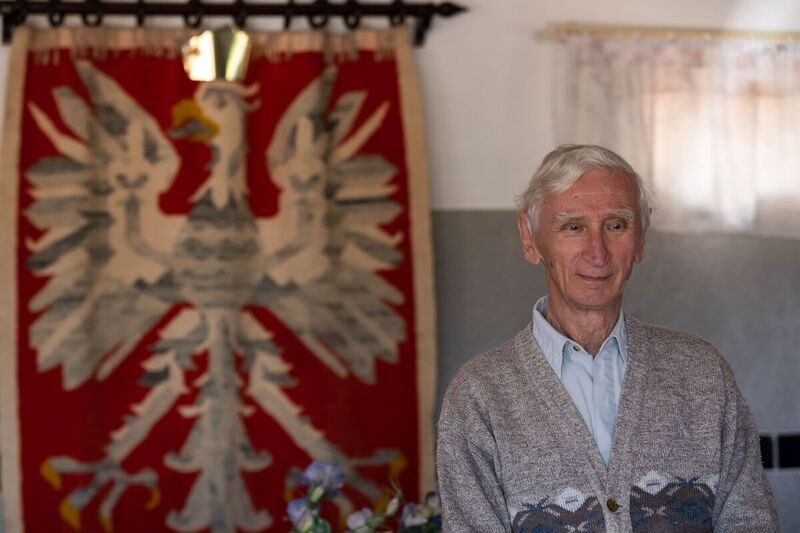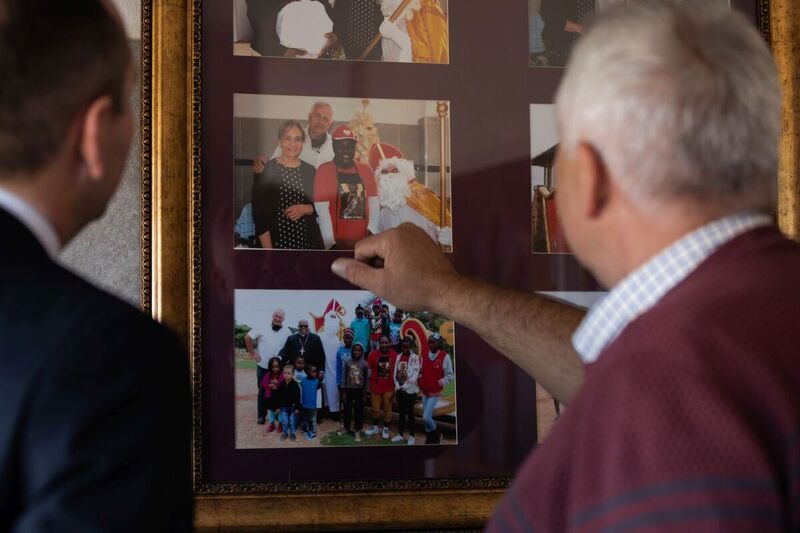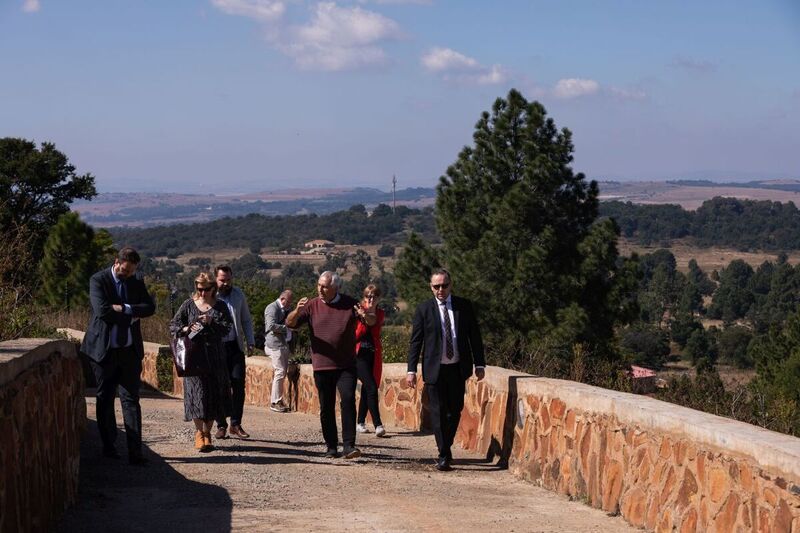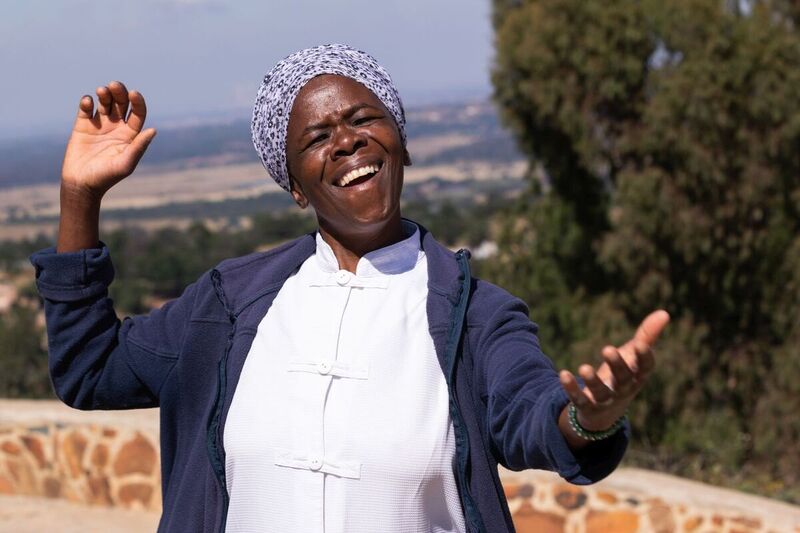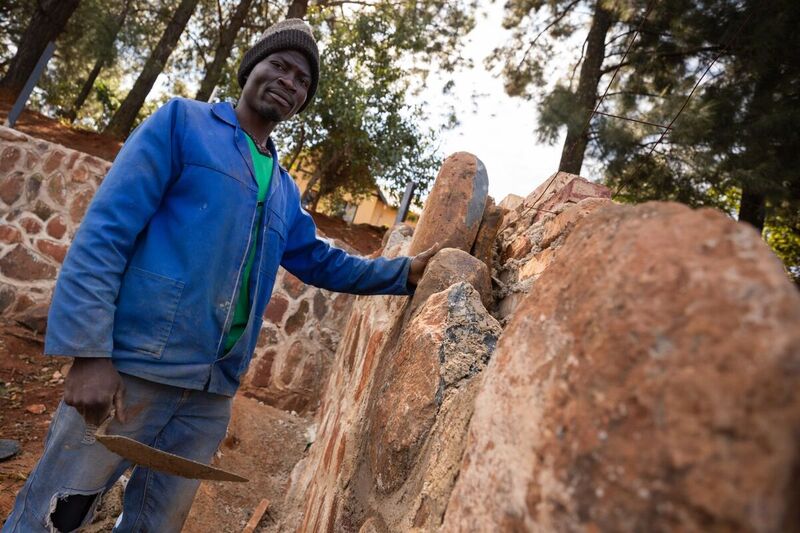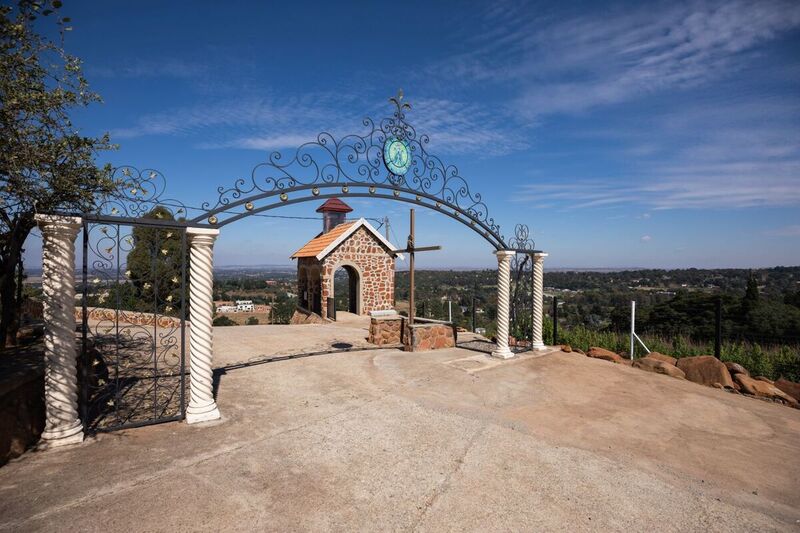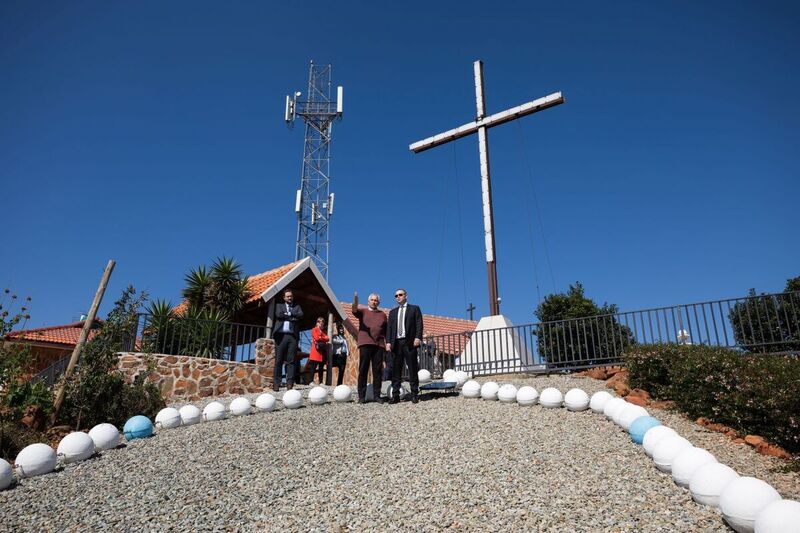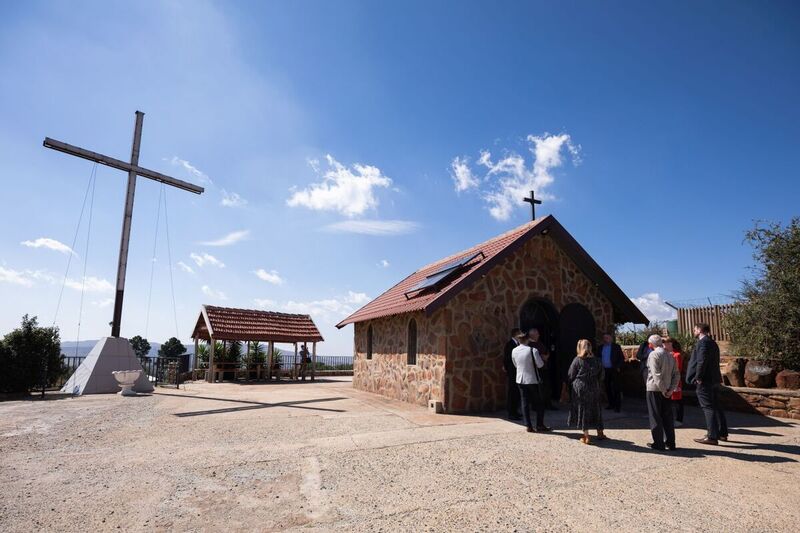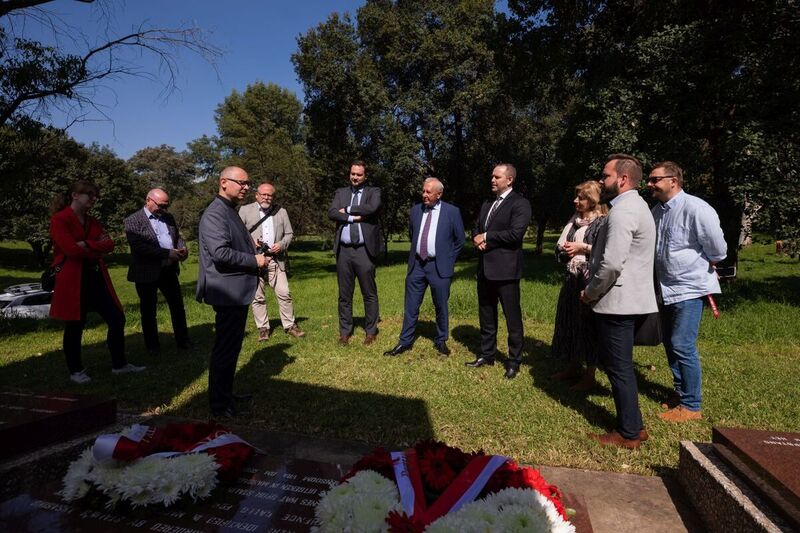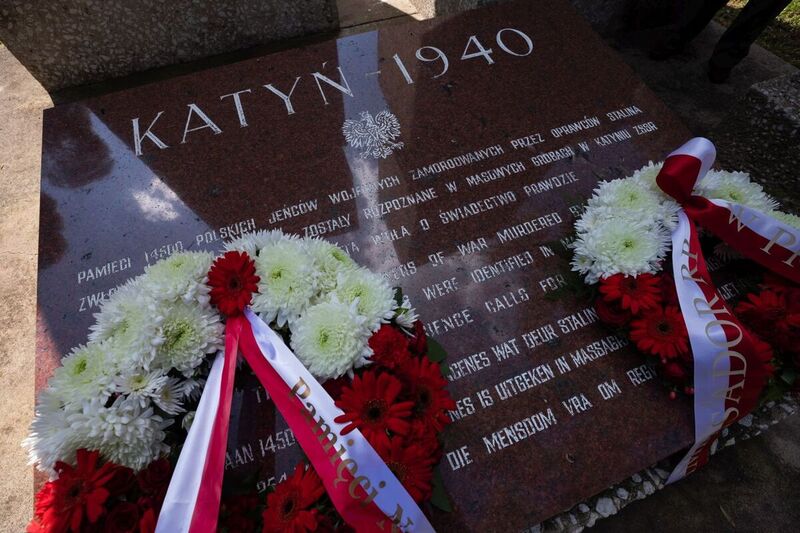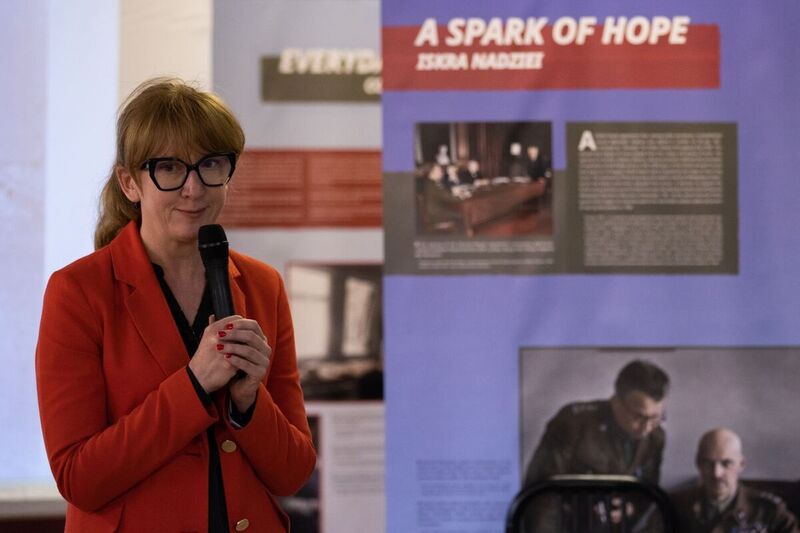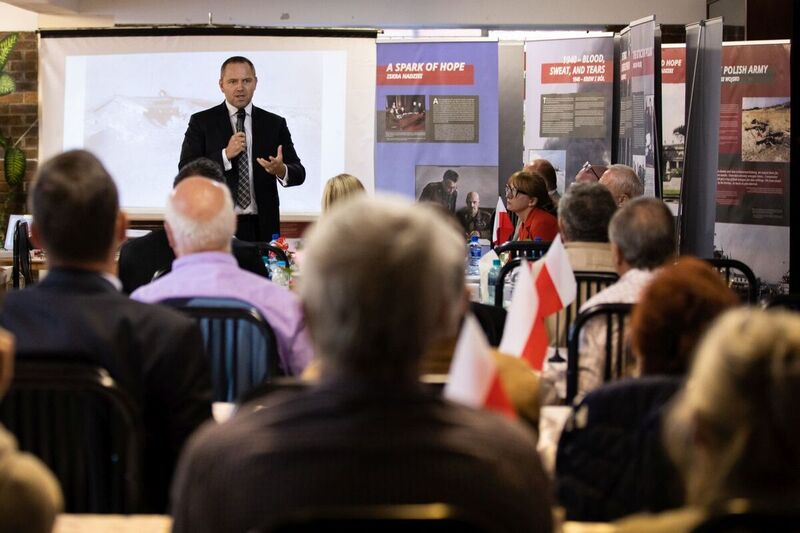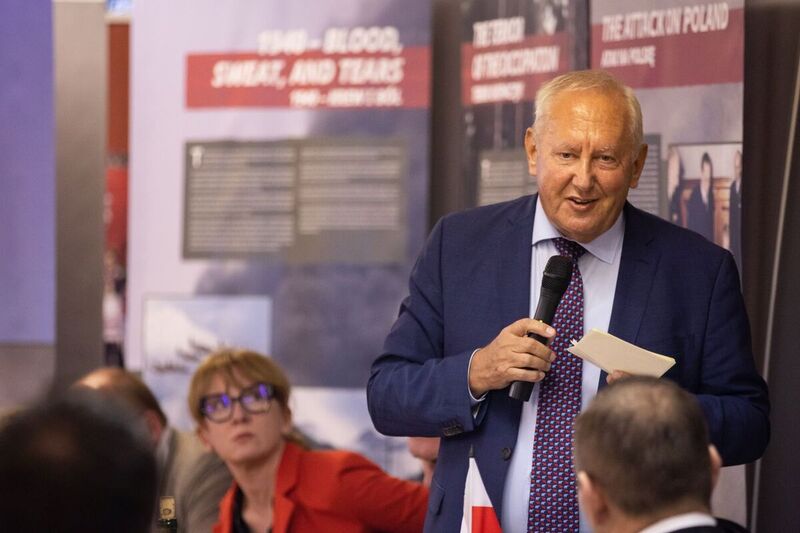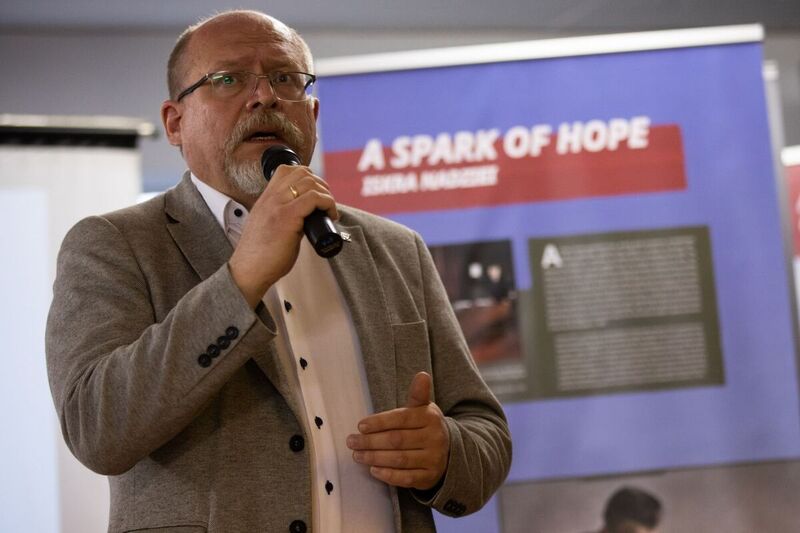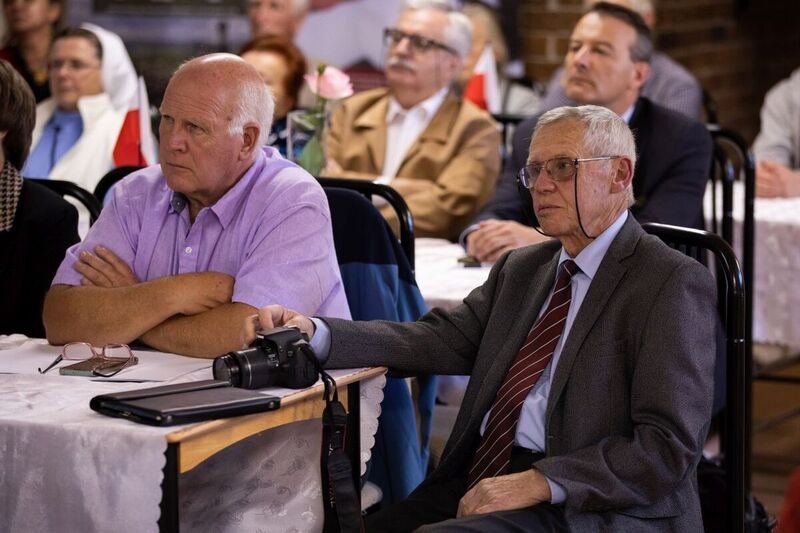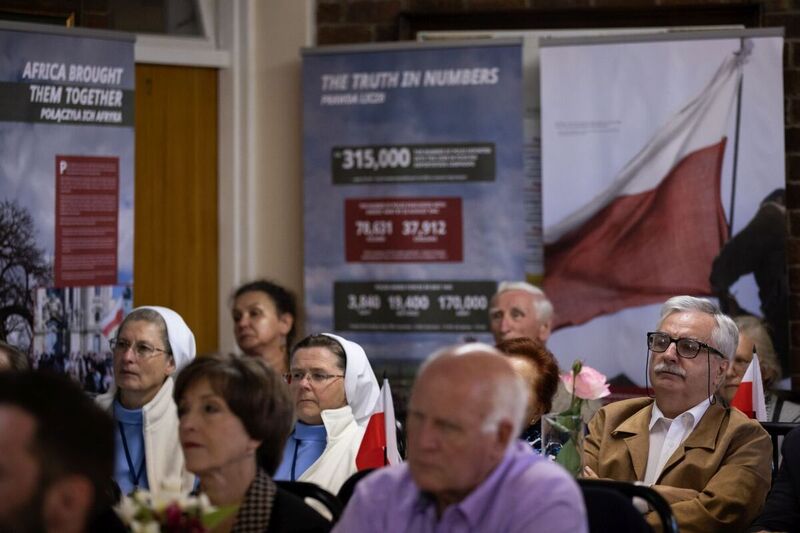On the third day of their visit to Africa, the IPN delegation, headed by the President of the Institute, Karol Nawrocki, Ph.D., was hosted by the Polish diaspora in Walkerville, South Africa. In the Polish community center in Walkerville, the visitors met with Mr. Marek Kukulski and his daughter Magdalena Liberda - the current President of the Polish Association - and briefed them on the key points of "The Trails of Hope. The Odyssey of Freedom" the Institute’s latest project.
Afterwards, Mr. Stefan Herok, the founder of the “Dawn of Hope” charity organization showed the IPN delegation around the Chapel of Our Lady of Mercy. President Karol Nawrocki presented Mr. Herok and Ms. Liberda with replicas of the Polish Armed Forces in the West emblem.
From Walkerville, the Institute delegation went back to Johannesburg and laid wreaths at the Katyn Memorial; dating back to 1981, it was among the first structures commemorating the massacre victims. Alongside the Polish officers murdered by the Soviets, it is a tribute to the South African Air Force men who flew relief missions to occupied Poland during the Warsaw Uprising, and the underground Home Army fighting the Germans.
The Memorial is constructed of bush hammered reinforced concrete with a set of three plaques in red granite. The sculpture theme is derived from ancient Slavic forms assembled to create an interplay of open and solid spatial forms creating the image of the non-existing cross.
The monument was erected to commemorate the Katyn Forest Massacre, in which 14,500 Polish officers, police officers and citizens were executed by the Stalin regime of the Soviet Union in 1940. In 1989, a decision was made to add two pulpits to the Katyn Memorial, from which the sacrifices of South African Airmen and the Polish Home Army soldiers would be annually commemorated.The Central stand (Katyn) contains soil from Katyn; in the left one (Polish Home Army) soil was placed from the insurgents’ graves in the Powazki Cemetery; and on the right (South African Air Force) - soil from the place of the crash of Jack van Eyssen’s Liberator in Józefów near Warsaw. The memorial is the most important Polish-founded monument in South Africa. It contributes to a sense of our multi-cultural heritage and embodies the bonds between South African and Polish communities.
Katyn 1940 – In memory of 14 500 Polish prisoners of war murdered by Stalin’s assassins. Remains of 4 254 of these prisoners were identified in mass graves at Katyn USSR. The world conscience calls for justice.
Warsaw 1 August – 2 October 1944 “To the Memory of the Warsaw Uprising Heroes and Polish Pilots who supported the Home Army”.
At the Katyń Monument in Johannesburg, one of the three plaques honours the South African men who gave their lives to assist the Polish Home Army during the uprising.The plaque at the Katyń memorial in Johannesburg which says “Warsaw Airlift. Grateful Poles honour the part played by the South African Air Force”
In the afternoon, the IPN leadership paid a visit to a daycare center run by the Servant Sisters of Blessed Virgin Mary. In St. Joseph the Worker Parish in Norwood, which is the main and the biggest Polish center in South Africa, the delegation met with the community and the Union of Siberian Exiles members. The host of the meeting was Fr. Radosław Szymoniak, pastor of the only Polish parish in South Africa, who had also accompanied the IPN delegation at the Katyń memorial earlier that day and said the prayer to the victims. The meeting was also attended by Ambassador Andrzej Kanthak and Prof. Hubert Chudzio from the Center for Documentation of Deportations, Expulsions and Resettlement. President Nawrocki opened the "Trails of Hope. The Odyssey of Freedom" exhibition there and, addressing the South African Poles, said,
"I see it in your faces and I hear from our Ambassador and consul that you actively draw on your heritage. Without people like you, building of the Polish community would be absolutely impossible."
***
Johannesburg is the largest city of the Republic of South Africa and one of the biggest on the continent. It is commonly referred to as “the Gateway to Africa”. Since 1994, it has been the provincial capital city of Gauteng in the Witwatersrand mining area. It is where the oldest organisation of Poles in Africa was founded - the Association of Polish Settlers in South Africa (currently called “The Polish Association in Johannesburg”). The establishment of an organisation for the Polish emigré community in Johannesburg was dictated by the needs of Poles who – after World War II – settled in the then Union of South Africa, and for various reasons (usually political) could not return to their homeland.
After the outbreak of World War II, the number of Poles going to southern Africa increased steadily, due initially to refugees from the Soviet Union, and later soldiers of the Polish Armed Forces. The provision of aid to compatriots was the responsibility of the Polish Relief Fund. In the first years of the war, about 3,500 Polish officers and soldiers were placed in military camps and hospitals within the territory of the Union of South Africa, and their number later increased to about 12,000. Moreover, the government of the Union of South Africa took in a group of about 500 Polish children, mostly orphans, who were deported as victims of Soviet transportations to Siberia from the Eastern Borderlands of the Second Polish Republic in the early 1940s.
After the end of hostilities in Europe, not all the Poles decided to return to their homeland, which was then under Communist rule. Among those who remained abroad was Franciszek Socha-Paprocki, a captain in the Polish Army, who settled permanently in the Union of South Africa. In 1948, he became the President of the Association of Polish Settlers and became involved in the activities of the Polish emigré community (he was awarded the Cross of Independence for hist). He died on 18 April 1963.
At West Park Cemetery in Johannesburg, there is a Polish Garden of Remembrance, and its military section includes five graves of Polish soldiers who died in the local field hospital (now called Baragwanath) as a result of wounds suffered in the campaign in West Africa in 1942. The James & Ethel Gray Park meanwhile, contains the only Katyń Monument in Africa, unveiled in 1981 with two additional plaques placed on it in 1989. The first commemorates the 69 South African airmen who lost their lives in 1944 while helping the Warsaw Uprising, and the second commemorates the struggle of the soldiers of the Home Army, the Polish underground army operating during World War II. All the inscriptions on the monument are in three languages: Polish, English and Afrikaans.
It is estimated that the Polish community in southern Africa currently numbers from 10,000 to as many as 30,000 people. In Johannesburg, as well as in other South African cities such as Cape Town or Vanderbijlpark, there are Polish parishes and schools which form the centre of Polish community life.
UNDER THE AFRICAN SUN
In the nineteenth century, scientific and research expeditions as well as Catholic missionary activities led to a better understanding of Central Africa. Unexpectedly, as a result of hostilities during the Second Worldd War, fate brought thousands of Poles to South East Africa. Fleeing the war, Poles ended up in Kenya, Southern Rhodesia (today’s Zimbabwe), Northern Rhodesia (today’s Zambia), Uganda, Tanganyika (today’s Tanzania), and the Union of South Africa (today’s South Africa or Republic of South Africa). At that time, these countries were under the protectorate of Great Britain and varied in their degree of independence.
There were also Polish soldiers in the Union of South Africa, who were deployed in the military hospitals of Johannesburg, Pietermaritzburg, and Durban. Soldiers of the Polish Armed Forces also received military training in the Union of South Africa. As early as 1941, Poles arrived in Northern Rhodesia from Cyprus, where they had gone following the outbreak of the Second World War along an evacuation route which led through Romania and the Balkan countries.
The group was located, among others, in the Fort Jameston and Livingstone housing settlements. It is estimated that about 429 Poles displaced from Cyprus found refuge in this country.
The fi rst ships of refugees from the Soviet Union reached the African continent on 27 August 1942. About 1,400 people ended up in settlements in Tanganyika and Uganda. In total, it is estimated that over 18,000 Polish citizens were transferred to 22 Polish settlements in South-East Africa.
